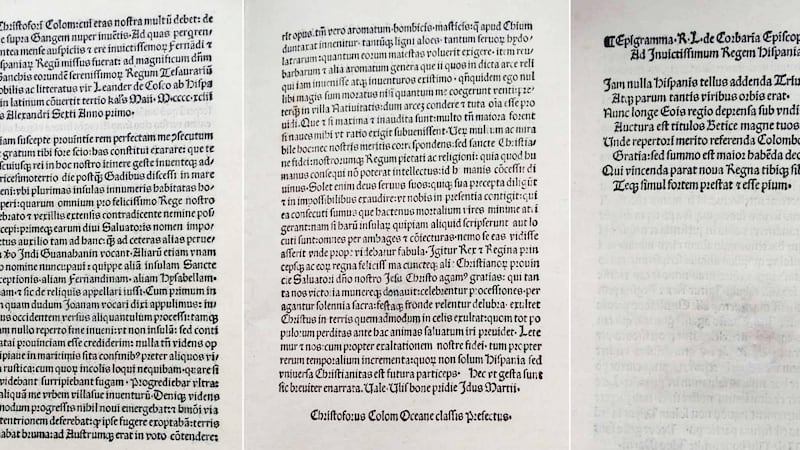A rare copy of a letter written by Christopher Columbus in 1493 that was stolen from a library in Florence has been returned to Italy after US investigators discovered it was in the collection of the Library of Congress.
The return of the letter, which had been sent to the king and queen of Spain, describing the Italian explorer’s first impressions of the New World, was hailed by US and Italian officials as a moment to celebrate because of the great historical significance of Columbus’s voyage.
However the mystery of how it ended up in the Library of Congress after being sold at auction by Christie’s in the early 90s is still being investigated by the US department of justice and the department of homeland security.

The investigation began when US law enforcement officials received a tip in 2012 from a confidential informant who told them that a rare copy of the Columbus letter on display in the Riccardiana library in Florence was a forgery.
It had replaced an original copy that, the informant said, was probably in the possession of the Library of Congress, which had received it as a donation from an estate in 2004. The tip was accurate - a stamp from the Riccardiana library on the letter held in Washington had been bleached out in an attempt to hide where it was taken from.
The head of the Riccardiana, Fulvio Stacchetti, said the original letter was likely substituted with a fake around 1950-51, when the letter was loaned to national library authorities in Rome.
He said that was the only time the document had left the Riccardiana, and that it would have been impossible for it to have been substituted with a fake while it was home because the reading room was so closely monitored.
The original letter had been sold to a rare book collector in Switzerland in 1990, then purchased by another collector at a Christie’s auction in 1992 in New York. It was finally bequeathed to the Library of Congress in 2004 by the estate of its final owner.
Jamie McCall, an assistant US attorney with the justice department who worked on the investigation and was in Rome to oversee the handover of the artefact, said the letter had been acquired in good faith by its final owner and by the Library of Congress.
“There is no evidence that they [the final owner] committed any wrongdoing in acquiring it themselves. They legitimately bought it at auction so when the Library of Congress received it, they believed it was legitimate and lawful,” Mr McCall said.
The copy in Florence was bound in a red book among other significant manuscripts, one of only about two dozen copies of the 1493 letter in existence.
Guardian Service









